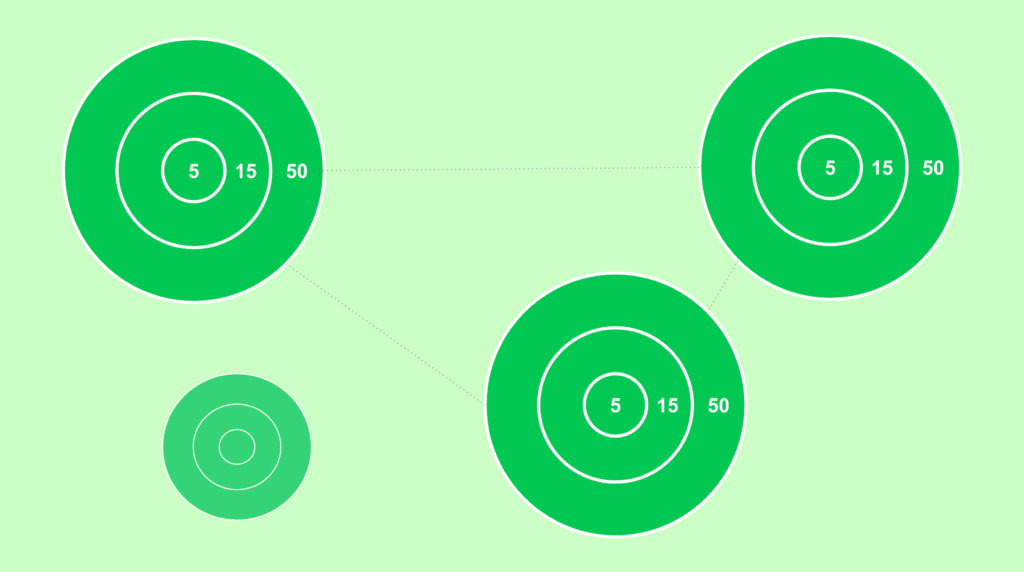
I just read a paper by Brian Hayden where he pushes back at other archeologists/anthropologists who believe by default that Neanderthals were brutish and unsophisticated [1].
He mentions that Neanderthal social structures and quantities were likely bands of around 12 to 24 members, in larger local groups of 10 to 20 bands, and possibly regional macro groups or tribes with populations of around 500. His studies of Western Australian natives, US Northwestern plain hunter gatherers, and other studies referenced are consistent with these quantities.
These quantities are also consistent with the Dunbar numbers of 5, 15, 50, 150, 500, and 1500 [2] [3] that he mentions seem to be the thresholds for brain social relation capacities and actual group structures observed empirically.
Hayden mentions what he calls “nuclear families” which are implied to be formed of 5 members. Dunbar has said in some presentations I saw that he doesn’t know why his numbers seem to jump from 5, to 15, to 50, to 150, and so on, instead of continuous quantities like 2, 3, 4, 5, 6, 7…..150.
The Nuclear Family and Group and Brain Capacity Levels
I propose that group structure levels, and thus brain capacity levels, were defined by the nuclear family number.
If due to homo evolution and environmental pressures, the long term average number of nuclear family members was 5, which included 2 parents and 3 kids, then that number, then multiplied by 3 (see below), must have determined the fixed levels (similar to electron energy levels in the atom [4]) of groups sizes, thus brain capacity levels as well.
The structures were as follows:
– Generation 1: The initial nuclear family was 5, which was formed by mother, father, and 3 kids.
– Generation 2: The nuclear family implied that, on average, 3 kids were going to reach adulthood and form their own nuclear families. This means the second generation had to be multiplied by 3 to 15 members. This 3 multiplier is key.
– Generation 3: In the same way as above, the third generation had to become 45. As these types of directly related bands may have been multigenerational, perhaps they were around 50, on average, as the grandparents were still productive socially or otherwise and still lingering around.
– Clans: As the above multifamily and multigenerational bands were close to other parallel bands, who may have been related as well, but not linearly as the nuclear family and vertical bands as above, they must have formed the clans of around 150, as the multiplier was persistently 3 as in 3 kids per nuclear family.
– Tribes or Macro Groups: As clans and chiefdoms became more sophisticated, especially in the Middle and Upper Paleolithic, these joined for convenience, perhaps for mating and trade purposes, into larger social structures combining into macro groups of around 450 to 500 (3 x ~150).
Conclusion
The above means it was not efficient evolutionarily for the brain to specialize in other arbitrary group numbers. The minimal nuclear family number, and the multiplier of 3, as in 3 kids per family on average, apparently determined the levels in group structures and brain capacity observed by archaeologists, anthropologists, and evolutionary psychologists as Robin Dunbar.
References
[1] Neanderthal Social Structure – by Brian Hayden: http://etherplan.com/neanderthal-social-structure.pdf
[2] Dunbar’s Number – by Wikipedia: https://en.wikipedia.org/wiki/Dunbar’s_number
[3] The Evolution of the Social Mind – Prof. Robin Dunbar – Royal College of Psychiatrists – 1st Symposium of the Evolutionary Psychiatry Special Interest Group (EPSIG), 2016:

Source: https://youtu.be/3hwR6vQHiUY
[4] Energy Level – by Wikipedia: https://en.wikipedia.org/wiki/Energy_level